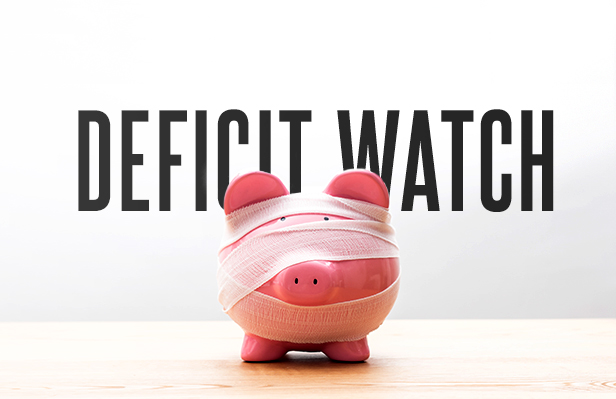Media

Pennsylvania Deficit Watch: December 2016
State revenue collections came in at $79.5 million below the official estimate for November, according to the Pennsylvania Department of Revenue. Lackluster collections wiped away the little progress made during October when revenue collections slightly exceeded expectations.
Overall, Pennsylvania collected approximately $2 billion last month, which was 3.8 percent less than anticipated. To date, revenue collections are $261.8 million below estimate.
In July, the legislature passed and Gov. Wolf signed a $1.3 billion revenue package, which includes $650 million in higher taxes, to help pay for a $1.6 billion increase in government spending. The revenue assumptions built into the billion dollar package are proving unrealistic.
The chart below shows revenue collections lagging official estimates in the first five months of the fiscal year.
Back in August, the Independent Fiscal Office (IFO) released a report identifying major problems with the revenue projections lawmakers used to create the appearance of a balanced budget. To present a more accurate picture of Pennsylvania's finances, the IFO made the following adjustments:
- The IFO deducts $95 million to pay for the expenses of the Commonwealth Financing Authority (CFA) from sales tax revenue. The legislature moved this line-item out of the General Fund Budget and created a new fund via the fiscal code. Legislative leaders have expressed an interest in passing gambling expansion to generate $100 million to cover CFA spending, but no enabling legislation exists.
- IFO assumes Act 39 (wine modernization) will raise $73 million in 2016-17. The legislature predicts an increase of $149 million—a $76 million difference.
- IFO projections of tobacco tax revenue (includes taxes on cigarettes, e-cigarettes, loose & roll-your-own tobacco) are approximately $38 million less than the official projections.
- $75 million from the Philadelphia casino is not included in the IFO’s official revenue estimate. They do not expect it will generate revenue for the current fiscal year.
In reality, the budget was unbalanced from the start, counting on $260 million in one-time revenue and transfers from other funds. It also includes a $200 million loan from the Pennsylvania Professional Liability Joint Underwriting Association.
Borrowing money to pay our bills is the very definition of unbalanced.
If current revenue trends continue, lawmakers and the governor will need to focus on reducing government spending to balance the budget. Ideas to consider include,
- Scaling back $800 million in arbitrary corporate welfare,
- Immediately imposing a (real) hiring freeze and travel ban, and
- Reviewing funds outside the General Fund budget for savings.
With seven months left in the fiscal year, revenue collections can improve. But lawmakers should start putting together a plan to balance the budget now in case revenues don't match expenditures come June. The last thing taxpayers need is another tax hike to cover last year's bills.